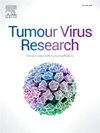通过靶向长读测序精确鉴定hpv阳性宫颈癌病毒-宿主整合事件。
IF 8.1
Q1 VIROLOGY
引用次数: 0
摘要
人乳头瘤病毒(HPV)整合到宿主人类基因组中,是HPV相关宫颈癌中经常观察到的事件,目前通过昂贵的全基因组测序(WGS)或RNA测序(RNA-seq)方法进行定位。本研究旨在开发一种靶向测序方法,以确定HPV在宫颈肿瘤中的整合,而不需要WGS或RNA-seq。我们采用了一种文库制备策略,使用平铺单引物结合HPV基因组作为模板,并可能将HPV序列延伸到邻近的宿主人类基因组序列中,从而产生HPV和人类嵌合序列。使用这种策略,我们在HPV18阳性HeLa和HPV16阳性SiHa细胞系中对已知的HPV整合进行了测序。我们进一步利用该方法检测了4例HPV阳性宫颈癌患者的HPV整合位点,并通过WGS和Sanger测序证实了这些整合断点。通过在拓扑相关结构域(TAD)边界内或附近的差异表达基因探索HPV整合的功能影响,可能被这些患者各自的整合事件破坏。我们发现ZFP36L1、CPA3、CPB1和CXCL8是一些已知的癌症相关基因,是被破坏的TADs中的差异表达基因。与WGS相比,我们的方法还将HPV整合检测的成本降低了90%,同时也最大限度地减少了测序数据量。我们相信,这种方法以显著降低的成本和较少的测序数据量捕获HPV整合,从而更好地了解疾病进展和监测癌症治疗。本文章由计算机程序翻译,如有差异,请以英文原文为准。
Precise identification of viral–host integration events in HPV-positive cervical cancers by targeted long-read sequencing
Human papillomaviral (HPV) integrations into host human genome, a frequently observed event in HPV associated cervical cancer, are currently mapped through expensive Whole Genome sequencing (WGS) or RNA sequencing (RNA-seq) methodologies. This study aims to develop a targeted sequencing assay to determine HPV integrations in cervical tumors without the need for WGS or RNA-seq. We employed a library preparation strategy using tiled single primers that bind to HPV genome as a template and possibly extend HPV sequences into adjacent host human genomic sequences resulting in HPV and human chimeric sequences. Using this strategy, we sequenced known HPV integrations in HPV18 positive HeLa and HPV16 positive SiHa cell lines. We further used this method to detect HPV integration sites in four HPV-positive cervical cancer patients and confirmed these integration breakpoints by WGS and Sanger sequencing. Functional impact of HPV integrations was explored through differentially expressed genes within or near topologically associating domain (TAD) boundaries, possibly disrupted by respective integration events in these patients. We found ZFP36L1, CPA3, CPB1 and CXCL8 as some of the differentially expressed genes within disrupted TADs, which are known cancer associated genes. Our approach also reduced the cost of HPV integration detection by 90 % compared to WGS while also minimizing sequencing data volume. We believe that this method captures HPV integrations at significantly reduced costs and lesser sequencing data volume leading to better understanding of disease progression and monitoring cancer treatment.
求助全文
通过发布文献求助,成功后即可免费获取论文全文。
去求助
来源期刊

Tumour Virus Research
Medicine-Infectious Diseases
CiteScore
6.50
自引率
2.30%
发文量
16
审稿时长
56 days
 求助内容:
求助内容: 应助结果提醒方式:
应助结果提醒方式:


